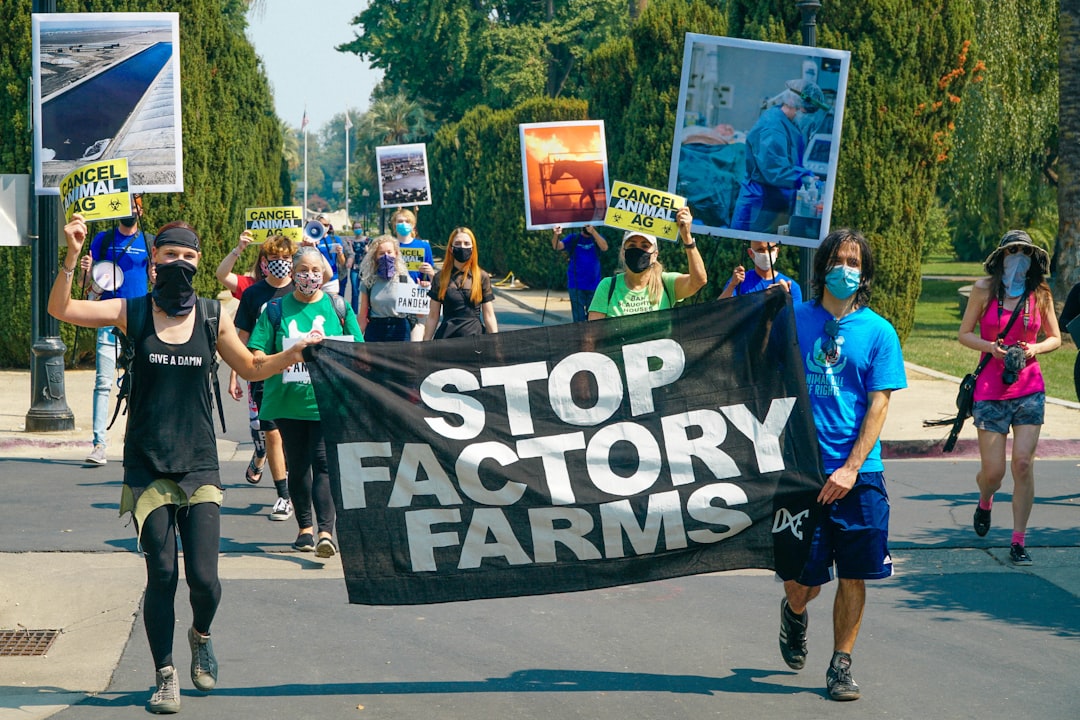Sick Of This Whiff: Pollution From Factory Farms
Communities Continue To Suffer From Water Pollution From This Largely Unregulated Industry, As Advocacy Groups Sue To Get The EPA In Action.

Ready to join the fight? You can read more about our mission here. Click the button below to support us and become a paid subscriber.
Well, well, well. The Environmental Protection Agency (EPA) has failed us again.
How about regulating water pollution from factory farms? Nope, the agency has neglected to create a plan, and now dozens of advocacy groups have filed a lawsuit against the federal department, claiming it has not responded to a 2017 legal petition demanding better enforcement of the Clean Water Act (CWA) for factory farms.
These farms, also known as concentrated animal feeding operations (CAFOs), are huge facilities that house thousands of animals in crowded, confined spaces and are usually run by large agricultural companies like Cargill, Smithfield, and Tyson.
More than 20,000 CAFOs are scattered across the United States, according to FoodIndustry.com. Much of the animal waste from these operations is stored in lagoons, which are large, swamp-like pits. They stink and they also can water pollution as the manure can easily flow into lakes and streams or seep into groundwater.
This waste contains a variety of potential contaminants, such as nitrogen and phosphorus, pathogens such as E. coli, growth hormones, antibiotics, chemicals used as additives to the manure or to clean equipment, animal blood, silage leachate from corn feed, and more, according to research.
Gross!!
But the real issue is that up to two-thirds of the more than 20,000 CAFOs are unregulated under the CWA, leaving them with little to no regulatory oversight in their pollution discharge.
CAFOs should be considered “point sources” of pollution. To control point source discharges, the CWA established the National Pollutant Discharge Elimination System (NPDES).
The NPDES program requires factories, sewage treatment plants, and other point sources to obtain a permit from the state and EPA before they can discharge their waste or effluents into any body of water.
But a weird loophole has existed for years where these large-scale farm operations only need to get discharge permits for their waste if they admit they discharge.
“Right now, EPA is using what’s essentially a self-reporting system,” Alexis Andiman, a senior attorney with Earthjustice, told Civil Eats in an article. “The problem there is, it’s very hard to check the CAFOs work, because EPA and state agencies just don’t have the resources to go out and figure out whether every CAFO that says it’s not discharging actually isn’t discharging.”
I’m always talking about how we have good laws on the books, but we need enforcement. Thanks to the EPA’s weak regulations, only a small fraction of factory farms have the required permits.
EPA also allows CAFOs to dump huge quantities of untreated waste onto cropland—even when no crops are growing. This risks dangerous waste seeping into the soil and running off into streams.
Meanwhile, communities with CAFOs continue to suffer with the impacts of this pollution.
Two examples from Food & Water Watch include:
Nancy Utesch who lives in rural Wisconsin surrounded by 16 dairy CAFOs. Her community relies on well water for drinking, but dairy waste has fouled the region’s groundwater. Leaching out of manure lagoons and overapplied to cropland, the waste’s nitrate and e. Coli pollution has made the water unsafe to drink.
This pollution has sickened countless people in Nancy’s area. She told the court how manure runoff got into a community member’s well, poisoning his entire family. It nearly killed his infant child, who needed treatment in intensive care.
Meanwhile, in South Dakota, David Gillespie used to farm a small plot of land directly downstream from a cattle factory farm. According to David, during heavy rains, factory farm runoff would flow downhill and into the creek running through his property. One day, he fell into this polluted water, just for a few moments.
But at the time, David had an open blister “smaller than a penny” on his foot. When exposed to the contaminated water, the blister turned into an ulcerous wound. He was eventually rushed to the emergency room and diagnosed with a severe blood infection.
David spent more than a month in the hospital recovering from the near fatal infection, and needed surgery to repair the mutilated bone in his foot. This experience still impacts his health and ability to walk to this day, nearly four years later.
In Iowa, industrial agriculture and factory farming is the number one contributor to Iowa’s water pollution, according to Iowa Citizens for Community Improvement.
The Des Moines Water Works, a water utility serving 500,000 Iowans in the Des Moines Metro, expends millions of dollars treating high levels of nitrates in Raccoon River water to meet drinking water standards. In addition, toxic blue-green algae has been detected in the Raccoon River which releases harmful cyanotoxins.
Agricultural waste has devastated waterways around the country and CAFOs are major water polluters. The EPA needs to do its job and regulate these factory farms to ensure clean water for everyone.
Want to get more involved or fight pollution from a CAFO near you? Check out this guide to get organized.
Want to share more resources or say more about this issue? Tell us more in the comments below!


